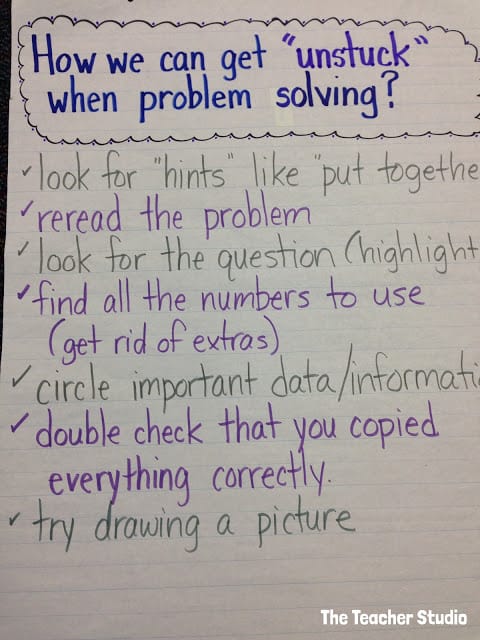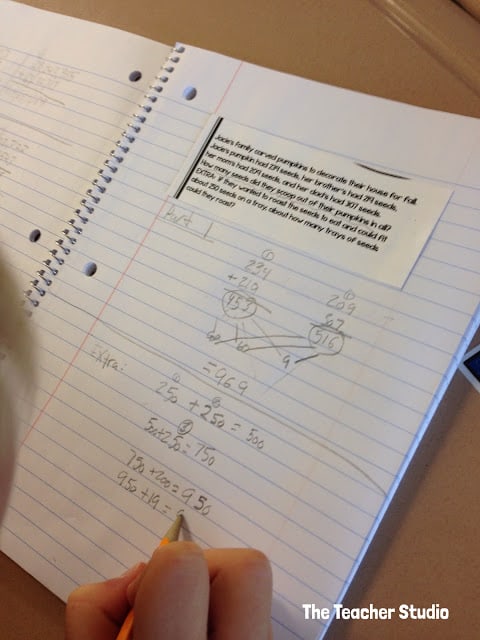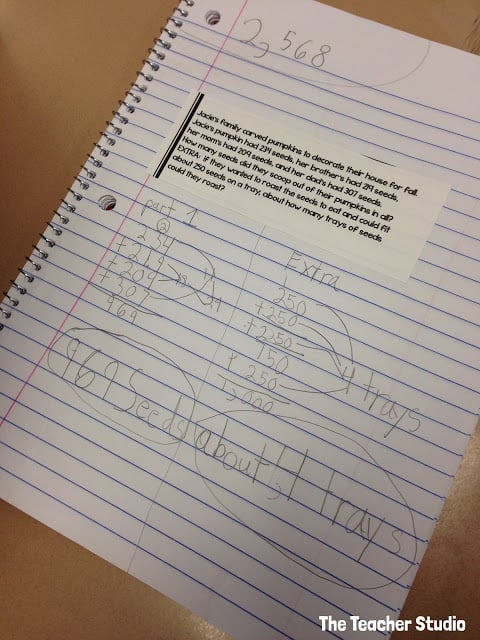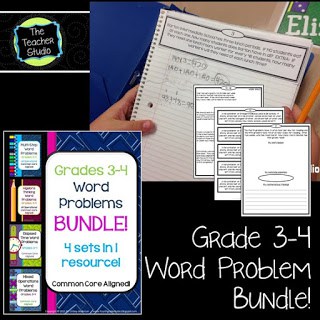As my students are building their confidence and learning more and more daily routines, I am starting to push their thinking in math more each and every day. Of course, with “pushing” comes resistance–and even complete standstills.
Many students are still at the very beginning level of understanding “perseverance” and have not developed a good sense of how to dig into a challenging situation.
Time to brainstorm!
As a class, we worked to create a chart that listed some suggestions for what to do to keep from getting STUCK when we work. Here’s what we came up with together!
Several students immediately suggested that a great tip is to look for important word hints like “take away” and “put together”. I agreed with them and said that those, indeed CAN be great hints as they work–and can help them VISUALIZE what is happening in a problem. I did caution them that there are times these words can fool them…so to be careful!
We were in full agreement that often you will need to read. And reread. And reread a problem. I told them even I read through problems more than once to make sure I am crystal clear about what the problem includes.
One suggestion was to hunt for the question-and we agreed that the question tends to be toward the end. I mentioned that some students in the past have actually found highlighting the question to be useful–and we made note that some problems may actually ask MORE than one question!
Similarly (and this took a little probing on my part!), we recognized that the FIRST part of a problem often gives very valuable information and data needed to solve the problem. Sometimes circling that information can help them get started. One student mentioned that sometimes there is extra information in problems that can be tricky so we made note of that.
We also talked about how sometimes the process of taking information from the problem and putting it in our notebooks leads to inaccuracies, incorrectly copying, or mistakes. We talked about how double checking all of that can keep us from getting stuck.
Finally, we agreed that trying to visualize a problem and, if helpful, to draw a picture or a diagram (like a number line or a chart) might make all the difference in the world. Finding a way to represent a problem visually can often “unstick” a problem solver!
LAST but not least, we decided to leave a little space at the bottom of our chart in case we came up with any other brilliant ideas! So what next? Time to practice! I saw lots of students reading and rereading…circling information…highlighting…and NO one gave up on our fun fall word problems!
Want to check out some of the HUNDREDS of word problems in my store? Here are just a few of my favorites to challenge your students!











